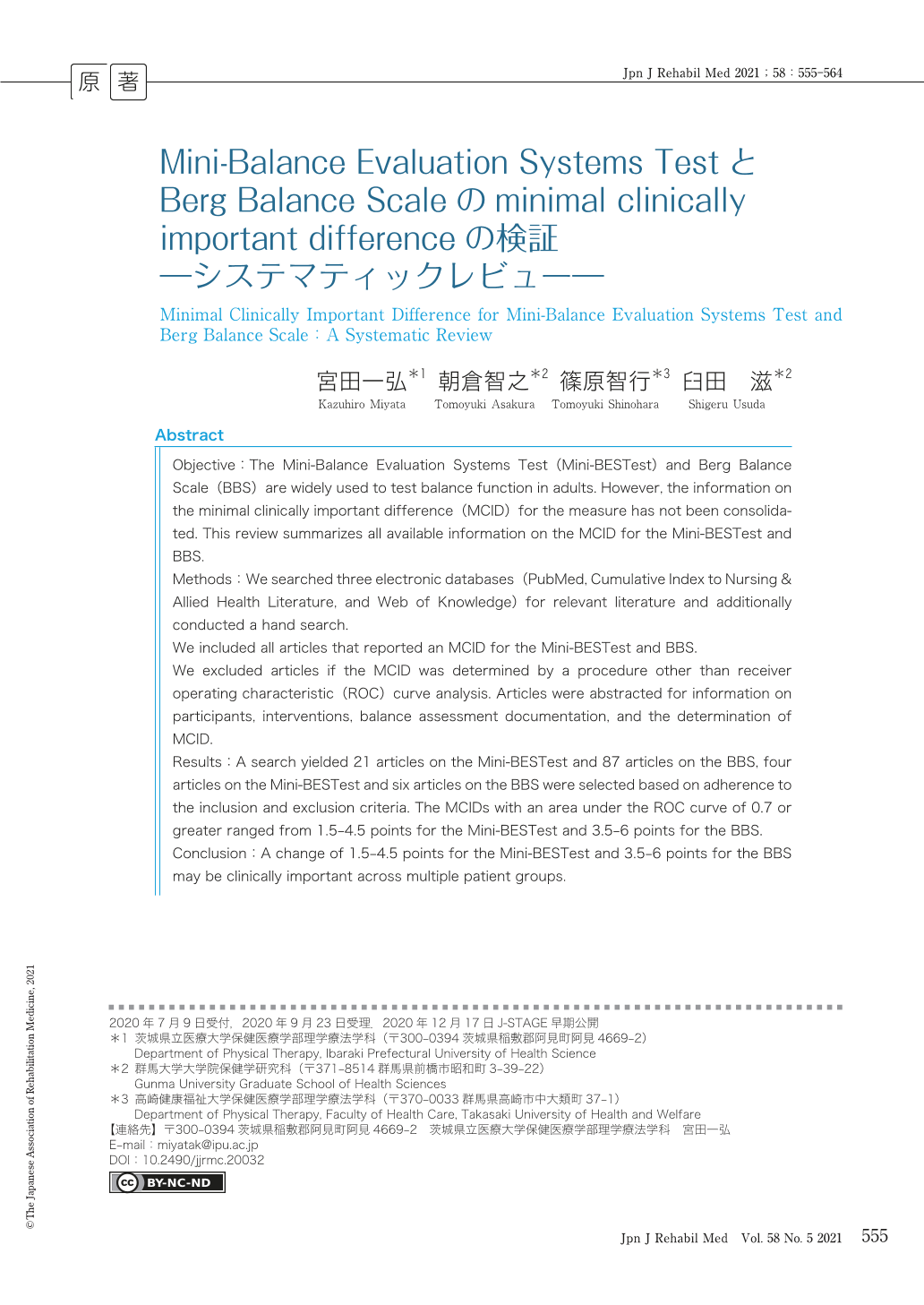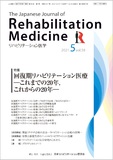Japanese
English
- 販売していません
- Abstract 文献概要
- 1ページ目 Look Inside
- 参考文献 Reference
要旨
目的:Mini-Balance Evaluation Systems Test(Mini-BESTest)とBerg Balance Scale(BBS)の臨床的に意義のある最小変化量(MCID)に関するシステマティックレビューを行った.
方法:3つのデータベースとハンドサーチにて検索および収集し,Mini-BESTestとBBSのMCIDを報告している論文を特定した.受信者動作特性(ROC)曲線以外の方法でMCIDを決定している論文は除外した.
結果:検索の結果,Mini-BESTestでは21編,BBSでは87編の論文が抽出され,取り込みおよび除外基準を満たしたのはMini-BESTestが4編,BBSが6編であった.ROC曲線下の面積が0.7以上であったMCIDはMini-BESTestが1.5〜4.5点,BBSが3.5〜6点の範囲であった.バイアスリスクの評価の結果,18点満点のうちMini-BESTestが10〜16点,BBSが9〜14点の範囲であった.
結論:Mini-BESTestで1.5〜4.5点,BBSで3.5〜6点の得点変化には,複数の患者集団において臨床的な意味があり,介入効果の判断や目標設定をする際の基準となる可能性がある.臨床で用いる際には,疾患,病期,介入期間,人種などを考慮したうえで用いる必要がある.
Objective:The Mini-Balance Evaluation Systems Test (Mini-BESTest) and Berg Balance Scale (BBS) are widely used to test balance function in adults. However, the information on the minimal clinically important difference (MCID) for the measure has not been consolidated. This review summarizes all available information on the MCID for the Mini-BESTest and BBS.
Methods:We searched three electronic databases (PubMed, Cumulative Index to Nursing & Allied Health Literature, and Web of Knowledge) for relevant literature and additionally conducted a hand search.
We included all articles that reported an MCID for the Mini-BESTest and BBS.
We excluded articles if the MCID was determined by a procedure other than receiver operating characteristic (ROC) curve analysis. Articles were abstracted for information on participants, interventions, balance assessment documentation, and the determination of MCID.
Results:A search yielded 21 articles on the Mini-BESTest and 87 articles on the BBS, four articles on the Mini-BESTest and six articles on the BBS were selected based on adherence to the inclusion and exclusion criteria. The MCIDs with an area under the ROC curve of 0.7 or greater ranged from 1.5-4.5 points for the Mini-BESTest and 3.5-6 points for the BBS.
Conclusion:A change of 1.5-4.5 points for the Mini-BESTest and 3.5-6 points for the BBS may be clinically important across multiple patient groups.

Copyright © 2021, The Japanese Association of Rehabilitation Medicine. All rights reserved.


